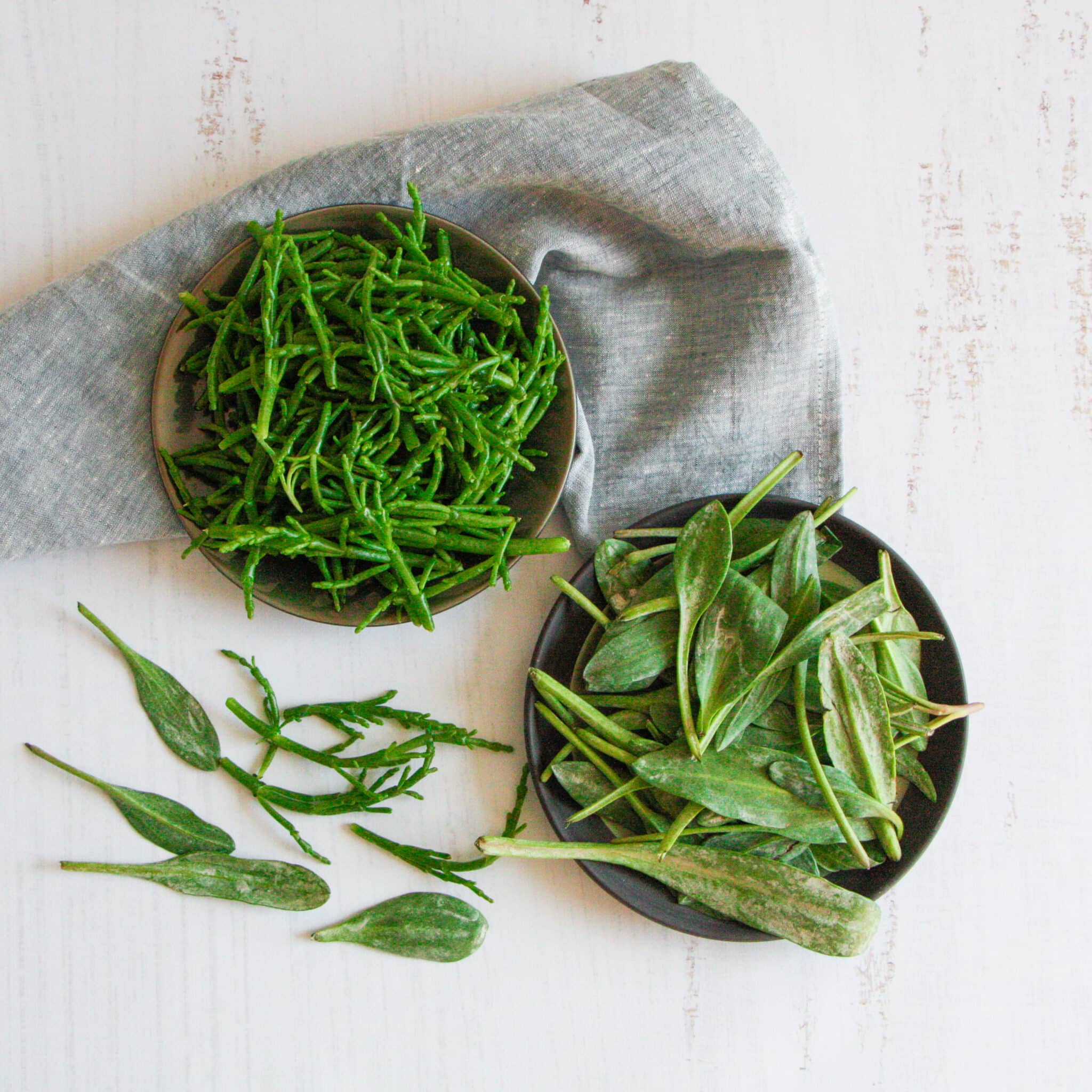Marine plants
In the salt meadows of the Somme Bay, when the sea retreats, the fishermen on foot take out knives and buckets. Their quest ? Clumps of saltwort and sea asters that protrude here and there.
Salicornia and asters: the foot fishing is the best
Fishing on foot in the Bay of the Somme should be an Olympic discipline, “survivor” category. First, you have to put on boots, walk for hours in the mud and bend down all the time to cut slippery marine plants with a mop. Then you have to put them in a bucket that is regularly emptied into a big burlap bag. Finally, you have to carry it all on your shoulders with the tide biting at your heels like a hungry wolf ! But according to the bay’s gardeners, the experience is worth all the sacrifices. First of all because marine plants are soon rarer than diamonds. The best known of them, the glasswort and the sea aster, grow almost exclusively in the Somme Bay, between the Hourdel lighthouse and the Crotoy. Then because with its Henson horses galloping under a reddish sky, the Marquenterre gives you back a hundredfold the efforts you made.
Good for your health
Constantly covered by water at the rhythm of the tides, sea grass is naturally rich in omega 3, trace elements and vitamin A. With samphire, we are even guaranteed to have something for everyone because this “water stick” grows back in a week. As for the sea aster, it is excellent for controlling diabetes and cholesterol. Two other plants also grow in the salt meadows : the sea soda called “pompon” which looks like a bunch of green beans, and the obione nicknamed “sea chips”. When baked in the oven at 170°, the latter becomes crunchy like the famous aperitif crackers. An advice, do not add salt. Like all marine plants, obione is naturally salty !





